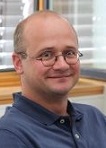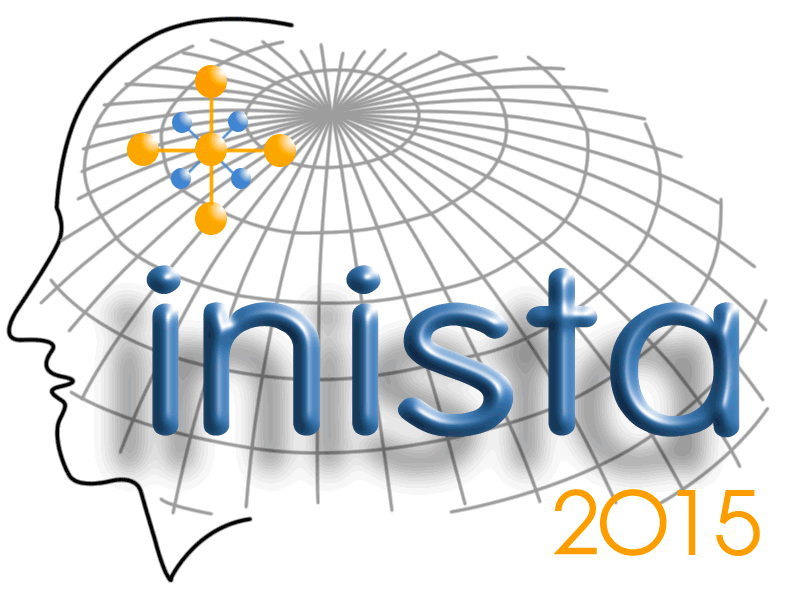Keynote Speech
 |
Intelligent System Applications in Different Domains: Visual Information Systems, Industrial Engineering, and Forensic Identification |
Computational Intelligence focuses on the design of hybrid intelligent systems combining nature-inspired computational approaches for real-world problem solving in a huge amount of application fields. The successful achievements obtained by these kinds of systems over the last two decades have resulted in an important paradigm shift in the artificial intelligence area. While dealing with the long-standing tasks (i.e. knowledge representation and reasoning, learning, heuristic search, …), intelligent systems provide sophisticated approaches for reasoning under imprecision and uncertainty incorporating advanced optimization, search and machine learning capabilities.
In this keynote we will review three different instances of such hybrid intelligent systems from rather different domains. The first one deals with multiobjective machine learning for information systems. The analysis and comparison of visual science maps will be tackled as a single- and multiobjective graph mining task, both using the classical Subdue method based on a beam search and extended variants based on evolutionary multiobjective optimization. Experiments on scientograms generated from Elsevier Scopus data will be reported. The second application involves an industrial engineering problem from the automotive industry. Multiobjective metaheuristics (ant colony optimization, genetic and memetic algorithms) incorporating an expert preference elicitation scheme will be used to deal with a realistic two-objective assembly line balancing problem, considering real data of the Nissan Pathfinder engine from the Nissan plant at Barcelona. Finally, the development of an automatic method to assist forensic anthropologists in the identification of deceased people through craniofacial superimposition will be introduced. This patented intelligent system considers the use of evolutionary/memetic algorithms and fuzzy sets for the automatic 3D skull model – 2D face photograph overlay. The results obtained in several identification cases solved by the University of Granada’s Physical Anthropology Lab in cooperation with the Spanish Scientific Police will be reviewed.
Oscar Cordón (SM’11) is Full Professor with the University of Granada (UGR), Granada, Spain. He was the founder and leader of that University’s Virtual Learning Center between 2001 and 2005. From 2006 to 2011 he was one of the founding researchers of the European Centre for Soft Computing, Mieres, Spain, in his role of Principal Researcher, and he is still contracted as Distinguished Affiliated Researcher (Scientific Consultant) at the Centre.
He has been, for almost 20 years, an internationally recognized contributor to R&D Programs in fuzzy systems, evolutionary algorithms, and ant colony optimization. He has published more than 300 peer-reviewed scientific publications including a research book on genetic fuzzy systems and 81 JCR-SCI-indexed journal papers (38 in Q1), advised 16 Ph.D. dissertations, coordinated 22 research projects and contracts (with an overall amount of 6.2M€), co-edited 10 special issues in international journals and 3 research books, and given 14 plenary talks and 1 tutorial in national and international conferences. By January 2015, his publications had received 2676 citations, carrying an h index of 26, and being included in the 1% of most-cited researchers in the world (source: Thomson Reuters's Web of Knowledge. 8602 citations and h index of 44 in Google Scholar). He also has an approved international patent on an intelligent system for forensic identification commercialized in Mexico and South Africa. He is Associate Editor of 11 international journals, including IEEE TRANSACTIONS ON FUZZY SYSTEMS (recognized as the Outstanding Associate Editor in 2008), IEEE TRANSACTIONS ON IEEE COMPUTATIONAL INTELLIGENCE MAGAZINE, IEEE ACCESS, INTERNATIONAL JOURNAL OF APPROXIMATE REASONING, WIREs ON DATA MINING and KNOWLEDGE DISCOVERY, and JOURNAL OF MULTI-VALUED LOGIC AND SOFT COMPUTING. He is a reviewer for more than 30 international journals.
Since 2004, he has taken many different representative positions with Eusflat and the IEEE Computational Intelligence Society (CIS), being an elected member of the IEEE CIS AdCom in term 2010–2012. He has been General Chair of FuzzIEEE2016 (WCCI 2016), Co-chair of 4 international conferences (WSC7, GFS2005, GFS2010, MIBISOC2013), Program co-chair of IEEE CEC 2015 and IFSA-EUSFLAT 2015, IPC chair of IEEE EFS2006, GEFS2008 and ESTYLF2008, international co-chair of HIS2008, publicity co-chair of IEEE SCCI2009, finance co-chair of IFSA-EUSFLAT 2009, special session co-chair of 2010 IEEE CEC 2010 (WCCI 2010), special session chair of Fuzz-IEEE 2013, advisory board member of ISDA'09, evolutionary algorithms IPC area chair of IPMU2010, and Fuzzy image, speech, vision and signal processing IPC area chair of Fuzz-IEEE 2011.
Prof. Cordón received the UGR Young Researcher Career Award in 2004. In July 2010, he received the IEEE CIS Outstanding Early Career Award in its 2011 edition, the first such award conferred. In 2011, his developments on soft computing methods in forensic identification were recognized with the IFSA Award for Outstanding Applications of Fuzzy Technology and with the granting of the EUSFLAT Best Ph.D. Thesis Award to Dr. Ibáñez's PhD dissertation, co-advised by Dr. Cordón.
 |
Combining Metaheuristics with ILP Solvers in Combinatorial Optimization |
Metaheuristics are approximate methods for optimization including, among others, ant colony optimization, evolutionary algorithms and tabu search. The combination of metaheuristics with complete techniques, such as integer linear programming (ILP) solvers, is one of the current lines of research in optimization. The main aim behind such approaches is to exploit the complementary character of different optimization strategies in order to obtain robust algorithms that generate high-quality solutions in reasonable computation times. Given a combinatorial optimization problem, general purpose ILP solvers such as CPLEX are often highly efficient for solving small to medium sized problem instances. This is because they are the result of many years of research. Moreover, they represent efficient implementations of cutting edge technologies in ILP solving. However, naturally they reach their limits with growing problem instance size. One of the motivations for the combination of metaheuristics with ILP solvers such as CPLEX is the aim to take profit from the application of the ILP solver even though the given problem instances are too large for applying these solvers directly.
In this keynote talk we will present several examples of our recent work that have resulted from the motivation outlined above. These examples are centered around the questions of (1) how a given problem instance can be split into subproblems and (2) how a given problem instance can be reduced in such a way that the resulting sub-instance is rather small but still contains high-quality solutions to the original problem instance.
Christian Blum currently holds the permanent position of an Ikerbasque Research Professor at the University of the Basque Country in San Sebastian (Spain). He received the doctoral degree in 2004 from the Free University of Brussels (Belgium).
Subject of his research is the use of swarm intelligence techniques for optimization in centralized and de-centralized settings, as well as the hybridization of metaheuristics with more classical artificial intelligence and operations research methods. In the context of these research lines he has published around 120 papers in journals and conference proceedings.
He is a member of the editorial boards of international journals such as Computers & Operations Research, Applied Soft Computing, Neural Computing & Applications and Computer Science Review. Moreover, he is very active concerning editorial activities in the context of international conferences and workshops. As a co-founder, he initiated the series of workshops on Hybrid Metaheuristics (HM). In addition, he has acted as editor-in-chief for GECCO, and as program (committee) chair for conferences such as EvoCOP, ANTS, and LION. Finally, he was invited to give tutorials at international conferences such as PPSN, GECCO, ICARIS and HIS, and keynote talks at international conferences such as ANTS, BIOMA and OPTMAS. Among the awards that he has received is the IEEE Transactions on Evolutionary Computation 2005 Outstanding Paper Award.
Tutorials
 |
 |
How to successfully apply Genetic Algorithms in practice: Representation and Parametrization
Dr. Alexander Asteroth, Computer Science Department, Bonn-Rhein-Sieg University, Germany Alexander Hagg, Computer Science Department, Bonn-Rhein-Sieg University, Germany |
Evolutionary computation and genetic algorithms (GA) in particular have in been applied very successfully to many real world application problems. However the success or failure of applying Genetic Algorithms highly depends on how a problem is represented. Additionally the number of free parameters makes applying these methods a science of its own which presents a huge barrier to beginners in this area. This course will give a brief summary on various representations, discuss parametrization and their influence on the dynamics of GA solvers, the last being the main topic of the course. The tutorial will be complemented with a practical exercise that can be solved overnight and will serve as basis in the second half of the tutorial, where we will discuss good and bad choices for parameters and representation.
Prerequisites: background in programming (Python will be used)
Target audience: Students with only basic experience in GA
Alexander Asteroth
Alexander Asteroth is a full professor at Bonn-Rhein-Sieg University of Applied Sciences (since 2010). He studied computer science and mathematics at University of Bonn where he received a PhD degree in computer science (2000) and a master's degree (Diplom) in 1995. His PhD-work on parameter identification using meta modeling techniques for an application in space medicine was funded by Wernher von Braun-Stiftung zu Förderung der Weltraumwissenschaften. He worked for German National Research Center for Computer Science GMD and in cooperative projects with the National Aeronautics and Space Research Centre DLR. His main focus of research is machine learning applications, in particular optimization using neural networks and evolutionary algorithms. Fields of application include robotics, physiological modeling and most recently efficient mobility.
Alexander Hagg
Alexander Hagg is currently in the final stage of his MSc degree in the Autonomous Systems programme at Bonn-Rhein-Sieg University of Applied Sciences in Sankt Augustin, Germany. His current work on metamodeling for subsonic aerodynamic shape optimization will be continued in his PhD Thesis. He received his BSc in computer science (2012) and worked for the Fraunhofer IAIS Institute in the area of computer vision and robotics. His main research interests are related to computer vision, robotics, machine learning, genetic algorithms and genetic programming. He is currently involved in projects concerning robotics, efficient mobility, aerodynamic visual analysis and metamodeling, and full vehicle body 3D scanning.
 |
A Tutorial on Manifold Clustering using Genetic Algorithms
Dr. Héctor D. Menéndez, Computer Science Department, University College London, UK |
Automatic Manifold identification is currently a challenging problem in Machine Learning. This process consists on separating a dataset blindly, according to the form defined by the data instances in the space. Data are discriminated in groups defined by their form. These approaches are usually focused on continuity-based methods where the manifold follows a continuity criterion. Currently, clustering techniques try to deal with the discrimination process, but there are a few algorithms that can generate an accurate and robust discrimination. This tutorial aims to present new different approaches, specially focused on Genetic Algorithms, which can deal with these problems.
Héctor D. Menéndez is Research Associate at University College London (UCL). He received his Ph.D. in Computer Science (2014) from Universidad Autónoma de Madrid, a BSc in Computer Science from Universidad Autónoma de Madrid (2010), a BSc in Mathematics from Universidad Autónoma de Madrid (2010), a MSc in Computer Science from Universidad Autónoma de Madrid (2012) and a MSc in Mathematics from Universidad Autónoma de Madrid (2013). Nowadays, He is involved with Software Systems Engineering Group (SSEG) at Department of Computer Science of UCL. His main research interests are related to Malware Detection, Clustering, Graph-based algorithms, Genetic Algorithms, Ant Colony Optimization, Social Data Analysis, Text Mining, Profile Extraction and Prediction Models.
 |
Sensor Fusion Engineering. Introduction, techniques and applications
Dr. Jesús García, Compuer Science Department, Universidad Carlos III de Madrid, Spain |
The objective of seminar is introducing sensor fusion techniques and system design problems, illustrated with representative examples: air traffic monitoring and trajectroy analysis, contextualized and coordinated surveillance networks.
System-level design of a data fusion process involves many detailed technical problems: source characterization, common referencing of data streams sources, association to objects in the scene, state estimation, situation understanding, etc. Data fusion technologies including detection (or decision) theory, estimation theory, and parametric and non-parametric algorithm solutions are required.
As presented here, the classical approaches can be extended or complemented with some Computational Intelligence techniques used to improve adaptability and robustness of solutions: optimization, coordination, knowledge representation, machine learning, etc. This is applicable in domains requiring a high degree of customized sensor fusion and demanding robust solutions for operational conditions, combining the use of classical fusion techniques with higher level criteria to drive the system behaviour.
The talk will illustrate experiences in specific sensor fusion projects and the applied techniques: sensor fusion and intelligent systems in air traffic control (ATC) systems, and surveillance networks in the airport surface domain.
Jesus Garcia Herrero is Associate Professor at the Universidad Carlos III de Madrid, Computer Science Department. He received his M.Sc. and PhD in Telecommunications Engineering from Universidad Politecnica de Madrid. His main research interests are computational intelligence, sensor and information fusion, surveillance systems, machine vision, air traffic management and autonomous systems. Within these areas, including theoretical and applied aspects, he has co-authored more than 10 book chapters, 50 journal papers and 120 conference papers.
He has served on several advisory and programming committees in organizations such as IEEE (senior member), ISIF and NATO. He is the chair of the Spanish IEEEE Chapter on Aerospace and Electronic Systems since 2013 and appointed Spanish member of several NATO-STO Research Groups. He was executive cochair for the 17th International Conference con Information Fusion and belongs to the board of directors of International Society of Information Fusion since 2014.
 |
Ant Colony Optimization Models in Constraint Satisfaction-based Applications
Dr. Antonio Gonzalez. Basque Center for Applied Mathematics-TECNALIA, Spain |
Nowadays, there is a huge number of applications that can be modelled, and solve, as a Constraint Satisfaction Problem (CSP). CSP belongs to this kind of traditional NP-hard problems with a high impact in both, research and industrial domains. The goal of these problems is to find an assignation for the set of variables in such a way a set of restrictions can be satisfied. This kind of NP-hard problems needs from a huge number of computational resources even for simple problems. For this reason, different heuristic methods has been studied to find feasible solutions in this domain. This tutorial will explain the different existing Ant Colony Optimization Models for solving CSP-based applications.
Antonio González Pardo is a Post-Doctoral researcher at BCAM-TECNALIA. He received a Ph.D. in Computer Science (2014) from Universidad Autónoma de Madrid, a BSc in Computer Science from Universidad Carlos III de Madrid (2009) and a MSc in Computer Science from Universidad Autónoma de Madrid (2011). Currently he is a post-doctoral researcher in a join position offered by Basque Center for Applied Mathematics (where he belongs to the Machine Learning group) and also by TECNALIA (where he participates with the Optima group). His main research interests are related to computational intelligence (genetic algorithms, PSO, SWARM intelligence...etc), Multi-Agent Systems and Machine Learning Techniques. The application domains for his research are Constraint Satisfaction Problems (CSP), Complex Graph-based problems, Optimization problems and Video Games.



